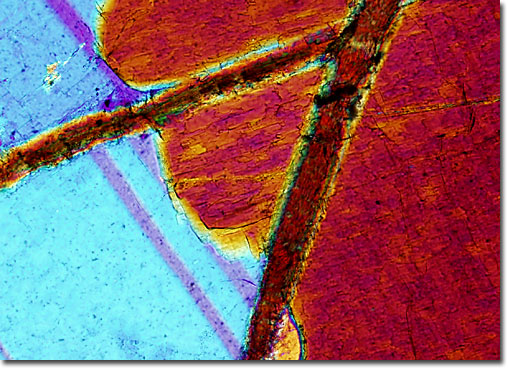|
The key components of amphibolites, amphiboles, are a group of extremely diverse, widely prevalent rock-forming silicate minerals. In fact, their collective name stems form the Greek word amphibolo, meaning “ambiguous,” which French mineralogist René-Just Haüy, who coined the term in 1801, found indicative of the tremendous amount of variety displayed by members of the group. Amphiboles may, for instance, appear as prismatic, needle-like, or fibrous crystals and can display a tremendous array of colors, ranging from white, green, and blue to dark brown and black. Due to such an extensive number of possible characteristics exhibited by members of this group of minerals, it is extremely difficult to identify them without the aid of a microscope or chemical analysis.
|
